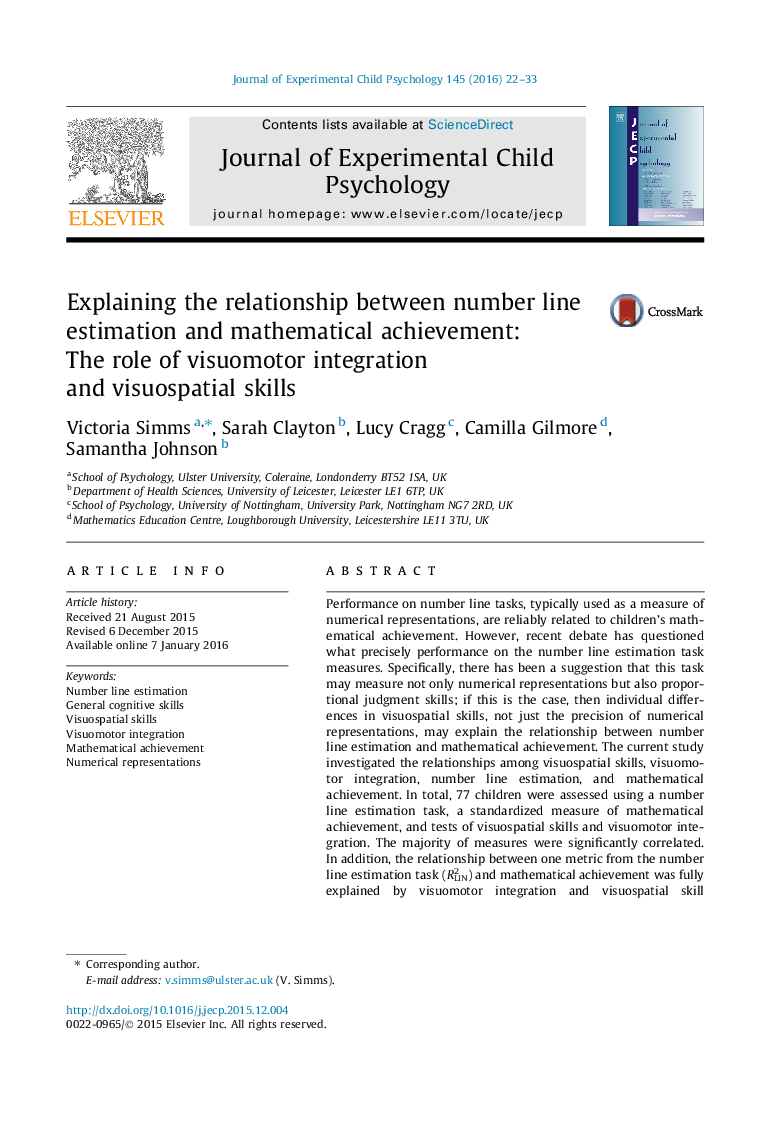| Article ID | Journal | Published Year | Pages | File Type |
|---|---|---|---|---|
| 917908 | Journal of Experimental Child Psychology | 2016 | 12 Pages |
•Relationship between number line estimation and mathematical achievement assessed.•Visuo-spatial skills and visuo-motor integration were also measured.•General skills explained the relationship between R2LIN and mathematics.•Caution required when assessing numerical representations using the number line task.
Performance on number line tasks, typically used as a measure of numerical representations, are reliably related to children’s mathematical achievement. However, recent debate has questioned what precisely performance on the number line estimation task measures. Specifically, there has been a suggestion that this task may measure not only numerical representations but also proportional judgment skills; if this is the case, then individual differences in visuospatial skills, not just the precision of numerical representations, may explain the relationship between number line estimation and mathematical achievement. The current study investigated the relationships among visuospatial skills, visuomotor integration, number line estimation, and mathematical achievement. In total, 77 children were assessed using a number line estimation task, a standardized measure of mathematical achievement, and tests of visuospatial skills and visuomotor integration. The majority of measures were significantly correlated. In addition, the relationship between one metric from the number line estimation task (R2LIN) and mathematical achievement was fully explained by visuomotor integration and visuospatial skill competency. These results have important implications for understanding what the number line task measures as well as the choice of number line metric for research purposes.
